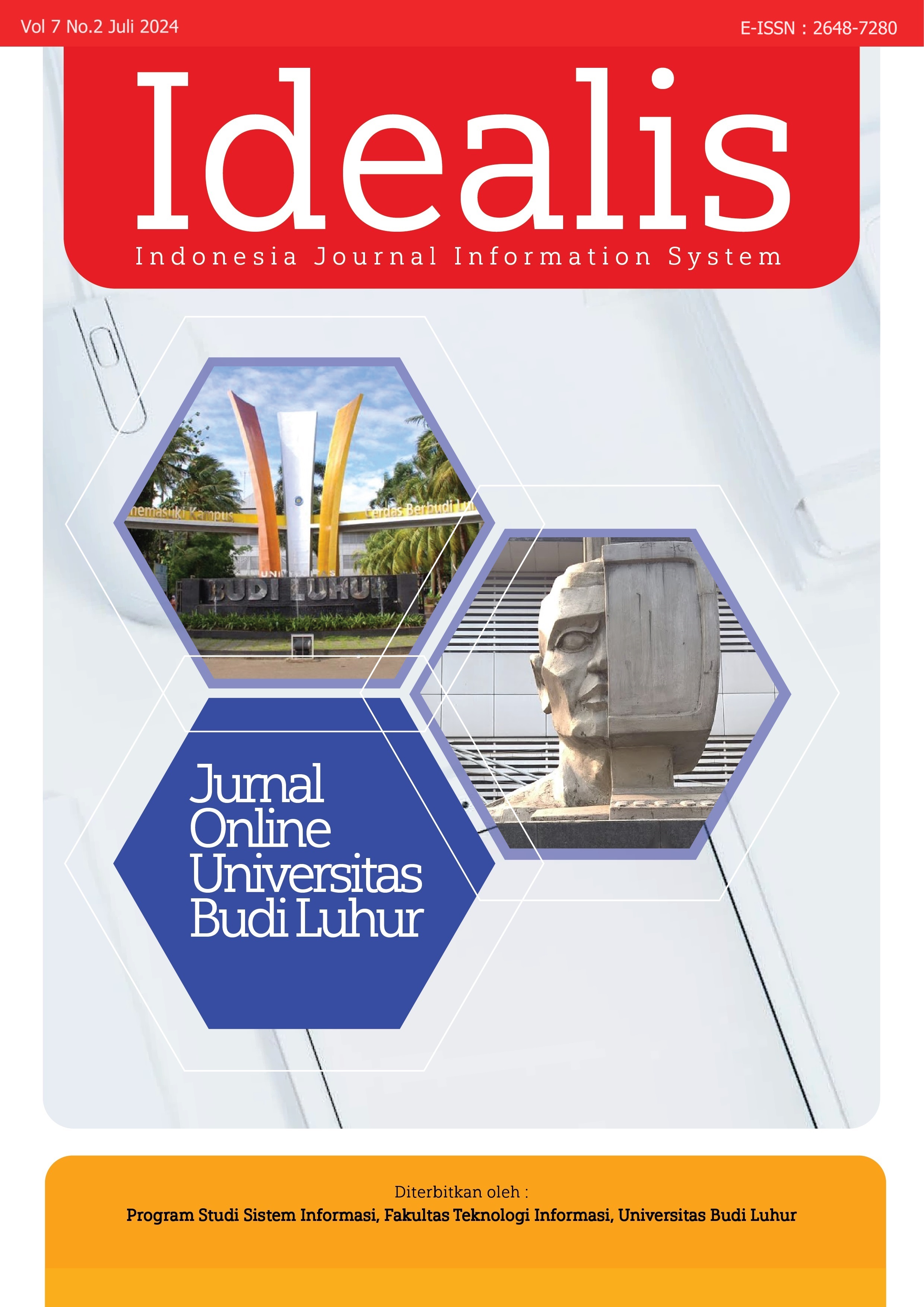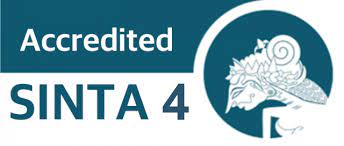KLASIFIKASI ULASAN PELANGGAN SHOPEE MALL TERHADAP E-COMMERCE PENJUALAN BAJU BATIK METODE NAÏVE BAYES
Abstract
Batik, as a symbol of Indonesian culture, has become an everyday lifestyle and is not only limited to ceremonial occasions. In the era of globalization, the advancement of batik making has integrated its presence in various aspects of life, including in casual and informal clothing choices. E-commerce, such as Shopee Mall, provides a means for consumers to purchase batik without leaving the comfort of their homes or workplaces. Nonetheless, online shopping carries higher risks and uncertainties, emphasizing the importance of building consumer trust. Customer reviews, as a valuable source of information, are key in helping consumers make purchasing decisions. This research applies the Naïve Bayes method to classify customer reviews related to batik clothes from five sellers at Shopee Mall. Based on the results of the research and discussion carried out, it is concluded that in classifying customer reviews regarding the sale of batik clothes, using the Naive Bayes method on data from 5 sellers, where each seller has 350 reviews from Shopee Mall, the highest accuracy value is achieved by the seller Batik Prakasa, with an accuracy value of 81.90%, precision 81.90%, and recall 100%. Meanwhile, the most positive words were achieved by Batik Kanaya 1 seller, with a total of 520 positive words and 156 negative words, and achieved an accuracy of 77.19%, precision of 77.19%, and recall of 100%.
Downloads
References
SERI REZKI FAUZIAH, “PEMAKNAAN BATIK SEBAGAI WARISAN BUDAYA TAKBENDA,” vol. 33, no. 2, pp. 17–27, 2019.
F. Sanjaya and L. Yuwanto, “Budaya Berbusana Batik pada Generasi Muda,” Mediapsi, vol. 5, no. 2, pp. 88–96, 2019, doi: 10.21776/ub.mps.2019.005.02.3.
R. Dimas, M. Ricky, and S. Y. V. I. Goni, “Jurnal ilmiah society,” vol. 1, no. 1, pp. 1–9, 2021.
I. Yunus and Ariawan, “Keputusan Pembelian Konsumen: Perspektif Online Consumer Review,” J. Manaj. dan Bisnis, vol. 3, no. 1, pp. 36–47, 2022, [Online]. Available: https://journal.uwks.ac.id/index.php/pragmatis/article/download/2476/1309
Y. Suryadiningrat, T. Y. Rahmat, and R. Anandita, “Pengaruh Penggunaan Media Sosial dan E-Wom Terhadap Kepercayaan dan Minat Beli Belanja Online,” J. Apl. Bisnis dan Manaj., vol. 8, no. 2, pp. 515–523, 2022, doi: 10.17358/jabm.8.2.515.
C. Widiyawati and M. Imron, “Sistem Pakar Diagnosa Penyakit Pada Kucing Menggunakan Metode Naive Bayes Classifier,” Techno.Com, vol. 17, no. 2, pp. 134–144, 2018, doi: 10.33633/tc.v17i2.1625.
A. Fitria and H. Azis, “Analisis Kinerja Sistem Klasifikasi Skripsi menggunakan Metode Naïve Bayes Classifier,” Pros. Semin. Nas. Ilmu Komput. dan Teknol. Inf., vol. 3, no. 2, pp. 102–106, 2018.
R. N. Devita, H. W. Herwanto, and A. P. Wibawa, “Perbandingan Kinerja Metode Naive Bayes dan K-Nearest Neighbor untuk Klasifikasi Artikel Berbahasa indonesia,” J. Teknol. Inf. dan Ilmu Komput., vol. 5, no. 4, pp. 427–434, 2018, doi: 10.25126/jtiik.201854773.
A. Rokib, W. Iwan, and M. Elis, “Analysis Application of PSAK 109 in Preparing Reports Finance at Baznas Regency Tasikmalaya,” J. Taraadin , vol. 1, no. 2, pp. 99–109, 2021.
D. Normawati and S. A. Prayogi, “Implementasi Naïve Bayes Classifier Dan Confusion Matrix Pada Analisis Sentimen Berbasis Teks Pada Twitter,” J. Sains Komput. Inform., vol. 5, no. 2, pp. 697–711, 2021.
E. Nurlia, “Penerapan Fitur Seleksi Forward Selection Untuk Menentukan Kematian Akibat Gagal Jantung Menggunakan Algoritma C4.5,” J. Tek. Inform. Musirawas) Elin Nurlia, vol. 6, no. 1, p. 42, 2021, [Online]. Available: https://sinta.kemdikbud.go.id/authors/profile/6652910/?view=garuda
Vynska Amalia Permadi, “Analisis Sentimen Menggunakan Algoritma Naive Bayes Terhadap Review Restoran di Singapura,” J. Buana Inform., vol. 11, pp. 141–151, 2020.
Y. N. Paramitha, A. Nuryaman, A. Faisol, E. Setiawan, and D. E. Nurvazly, “Klasifikasi Penyakit Stroke Menggunakan Metode Naïve Bayes,” J. Siger Mat., vol. 04, no. 01, pp. 11–16, 2023, [Online]. Available: https://www.kaggle.com/datasets/zzettrkalpakbal/full-filled-
R. Nurhidayat and K. E. Dewi, “Penerapan Algoritma K-Nearest Neighbor Dan Fitur Ekstraksi N-Gram Dalam Analisis Sentimen Berbasis Aspek,” Komputa J. Ilm. Komput. dan Inform., vol. 12, no. 1, pp. 91–100, 2023, doi: 10.34010/komputa.v12i1.9458.
A. Syihabudin, A. Ratna Juwita, and A. Rizki Pratama, “Penerapan Algoritma Naive Bayes Untuk Analisis Sentimen Terhadap Produk Motor Matic Honda Beat dan Scoopy,” Sci. Student J. Information, Technol. Sci., vol. IV, no. 1, pp. 95–101, 2023.
Z. R. Mair, W. Cholil, E. Yulianti, D. Marcelina, Theresiawati, and I. N. Isnainiyah, “Convolutional Neural Network Analysis on Handwriting Patterns and Its Relationship to Personality: A Systematical Review,” 2023 Int. Conf. Informatics, Multimedia, Cyber Inf. Syst. ICIMCIS 2023, pp. 308–312, 2023, doi: 10.1109/ICIMCIS60089.2023.10348999.
Z. R. Mair and M. H. Irfani, “Permainan INGBAS (Gunting, Batu, Kertas) Menggunakan Arsitektur Convolutional Neural Network,” J. Tek. Inform. dan Sist. Inf., vol. 10, no. 1, pp. 1019–1026, 2023.
Copyright (c) 2024 M. Ade Fahtu Rahman, Zaid Romegar Mair, Dewi Sartika

This work is licensed under a Creative Commons Attribution-ShareAlike 4.0 International License.













.png)

